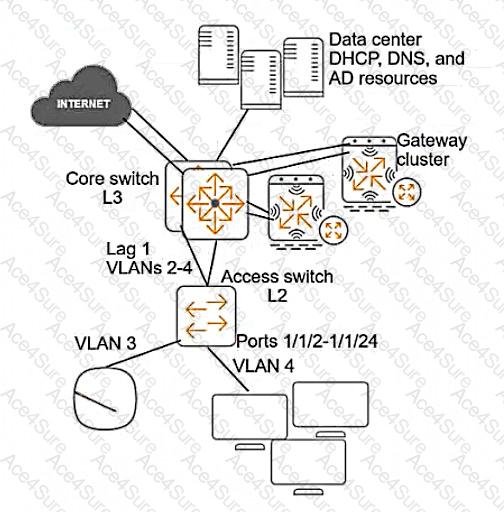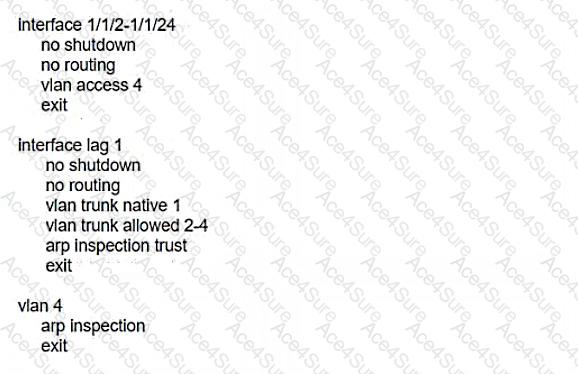This is because ARP inspection is a security feature that validates ARP packets in a network and prevents ARP poisoning attacks12 ARP inspection works by intercepting, logging, and discarding ARP packets with invalid IP-to-MAC address bindings1 To enable ARP inspection, the switch needs to know which ports are trusted and which are untrusted. Trusted ports are those that connect to authorized DHCP servers or other network devices that are not vulnerable to ARP spoofing. Untrusted ports are those that connect to end hosts or devices that might send forged ARP packets13
In the exhibit, LAG 1 is configured as a trusted port for ARP inspection, which is correct because it connects to the core switch. However, the edge ports (1/1/1-1/1/24) are not configured as untrusted ports for ARP inspection, which is incorrect because they connect to end hosts that might be compromised by an attacker. By default, all ports are untrusted for ARP inspection, but this can be changed by using the command ip arp inspection trust on the interface configuration mode3 Therefore, to protect VLAN 4 against ARP poisoning, the edge ports should be configured as untrusted for ARP inspection by using the command no ip arp inspection trust on the interface configuration mode. This way, the switch will validate the ARP packets received on these ports against the DHCP snooping database or an ARP access-list and drop any invalid packets34
A. ARP proxy is not enabled on VLAN 4. This is not an issue because ARP proxy is an optional feature that allows the switch to respond to ARP requests on behalf of hosts in different subnets5 It is not related to ARP poisoning or ARP inspection.
B. LAG 1 is configured as trusted for ARP inspection but should be untrusted. This is not an issue because LAG 1 connects to the core switch, which is a trusted device that does not send forged ARP packets.
C. DHCP snooping is not enabled on VLAN 4. This is not an issue because DHCP snooping is a separate feature that prevents rogue DHCP servers from offering IP addresses to clients6 It is not directly related to ARP poisoning or ARP inspection, although it can provide information for ARP inspection validation if enabled




